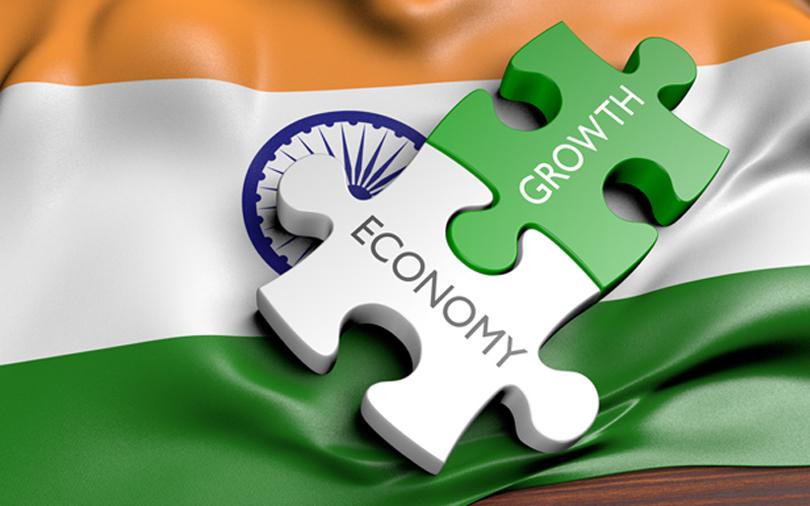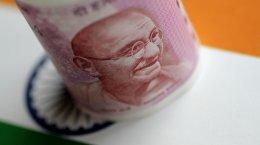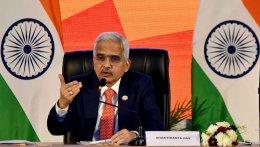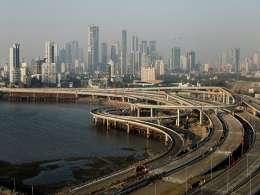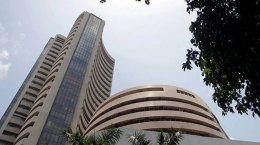 The Indian economy is likely to grow between 7% and 7.5% in the financial year that begins in April, the government’s latest economic survey estimates.
The Indian economy is likely to grow between 7% and 7.5% in the financial year that begins in April, the government’s latest economic survey estimates.
The survey, unveiled just a couple of days before the Narendra Modi government’s last full budget, also expects oil prices to rise by more than 12% in the coming financial year.
This is significant considering the fact that India imports more than three-fourths of its energy needs. Rising crude prices will not only push up India’s import bill but will also put pressure on its foreign-exchange reserves, which had surged to a record high of $409.4 billion in the first week of January.
India had benefited from low crude prices over the past three years, but the past year has seen oil prices edge up significantly. Between 1 July 2017 and 14 January 2018, the import price of India’s crude basket went up 63% from $46 a barrel to $76 a barrel. However, a slight appreciation in the rupee vis-a-vis the US dollar did offset this equation slightly in favour of the Indian economy.
“Against the emerging macroeconomic concerns, policy vigilance will be necessary in the coming year, especially if high international oil prices persist or elevated stock prices correct sharply, provoking a sudden stall in capital flows,” the survey said.
The survey also says that employment, education and agriculture will be the government’s key focus areas.
The survey also projects that gross value added–a measure of the value of goods and services produced–is likely to grow 6.1% during 2017-18.
“These estimates broadly corroborate with the corresponding estimates by the IMF and the World Bank. With the realisation of such robust growth rates, India is poised to re-emerge as the global growth leader,” DK Srivastava, economist and chief policy advisor at EY in India, said in an emailed comment.
The survey is significant as it comes after the implementation of the Goods and Services Tax (GST) and comes before the next general elections due in 2019.
The survey comes amid worrying numbers both when it comes to economic growth as well as inflation. While the government’s earlier estimates for 2017-18 had pegged economic growth at 6.7%, the revised estimates put the figure at just about 6.5%. GDP growth during the July-September quarter was 6.3%, the fastest this fiscal year.
Moreover, the rising spectre of retail inflation, which touched a 15-month high of 4.88% in November last year, has put the central bank on the back foot. It is unlikely to bring down interest rates below the existing 6% anytime soon.
The survey notes that inflation in 2017-18 was at a six-year low, with the consumer price index at 3.3% and the wholesale price index at 2.9% during April-December 2017.
The survey also says that net exports of goods and services will decline in the coming year owing to higher expected increases in imports.
Exports had contracted for two years before rebounding in 2016-17 and are likely to grow faster in 2017-18.
The survey notes that foreign direct investment (FDI) into India grew 8% to $60.08 billion in 2016-17 from $55.56 billion the previous year. In the first six months of 2017-18 (April-September), total FDI inflow was $33.75 billion, with the services sector registering a 15% uptick in FDI, it notes.
The survey also takes note of India’s booming stock markets and notes that the more than 45% surge in India’s domestic capital markets since December 2015 is due to two main factors – high expectations of earnings growth and the November 2016 demonetisation.
The survey goes on to say that if the boom continues, the number of public issues hitting the stock markets could double in their number and value. It notes how in 2015-16, more than Rs 92,200 crore was raised via 444 issues, while the following year the figure went up to just under Rs 1,03,000 via 540 issues. In first eight months of the current financial year, a whopping Rs 1,52,919 crore has been raised via 425 public issues.
On taxes, the survey says that since the implementation of the GST from 1 July last year, there has been a 50% increase in the number of unique indirect taxpayers as compared to the pre-GST system, with 9.8 million new GST registrants.
Talking about how the implementation of the GST has panned out, the survey notes that the states’ share in taxes between April and November grew by more than 25%, much higher than the net tax revenue to the centre which grew by 12.6% and the gross tax revenue that went up by 16.5%.
In addition, the survey says that since November 2016, when the government banned old high-value banknotes, 1.8 million new individual taxpayers have been added.
Talking about socio-economic indicators, the survey says that the Indian society continues to exhibit a strong preference for the male child. “Parents continue to have children until they get the desired number of sons. This kind of fertility-stopping rule leads to skewed sex ratios but in different directions: skewed in favor of males if it is the last child, but in favor of females if it is not the last,” the survey notes. It, however, says that the central government’s women-oriented schemes—Beti Bachao, Beti Padhao and the Sukanya Samriddhi Yojana—are much needed.
Moreover, the economic survey expects that India’s urban population will grow to 600 million by 2031.
The survey, which dedicates a whole chapter on whether India could become a victim of a phenomenon called the ‘late converger stall’ in economic development, alludes to four possible challenges—the backlash against globalisation which reduces exporting opportunities, the difficulties of transferring resources from low productivity to higher productivity sectors, the challenge of upgrading human capital to the demands of a technology-intensive workplace, and coping with climate change-induced agricultural stress—the country would need to face up to if it wants to avoid getting trapped.
On climate change, the survey notes that the footprint of the phenomenon is ‘evident’ with extreme whether adversely impacting agricultural growth. This, even as it recommended the use of new technology to dispose of crop waste, so as to avoid instances like the recent smog that engulfed Delhi in recent months.
